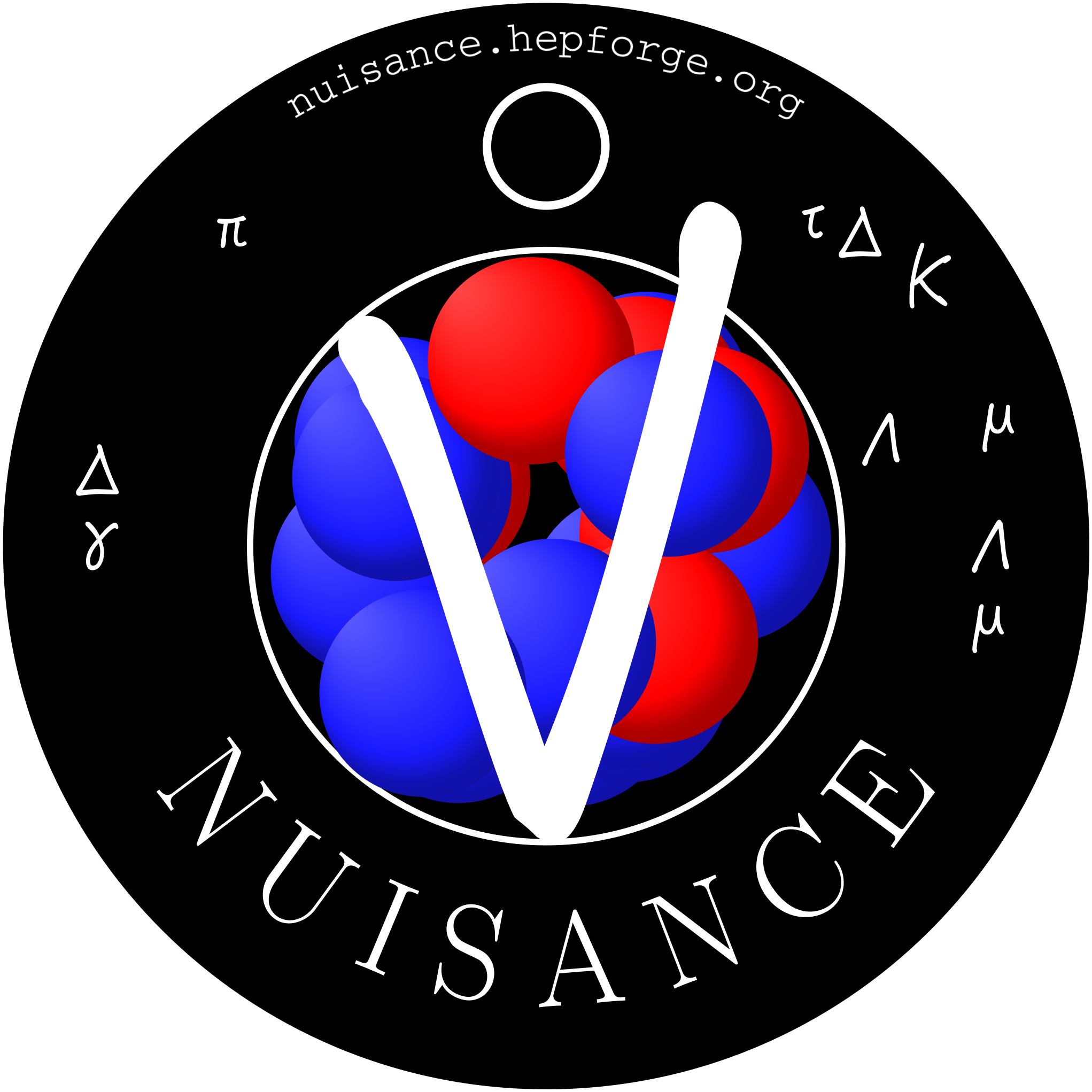|
|
close
Warning:
Can't synchronize with repository "(default)" ("(default)" is not readable or not a Git repository.). Look in the Trac log for more information.
- Timestamp:
-
Jan 6, 2017, 1:56:23 PM (8 years ago)
- Author:
-
Clarence Wret
- Comment:
-
--
Legend:
- Unmodified
- Added
- Removed
- Modified
-
|
v37
|
v38
|
|
| 120 | 120 | The `FitEvent` class is an object which contains information about one single event: all the particles, their kinematics and their status after the interaction, the interaction channel which produced the final state, possible secondary interactions, the interaction target, and so on. The `FitEvent` class is implemented in `src/FitBase/FitEvent.cxx` and essentially the generator-independent common event format which NUISANCE uses for the generator events. |
| 121 | 121 | |
| 122 | | [=!point_signal] |
| | 122 | [=#point_signal] |
| 123 | 123 | We see that the `src/T2K` directory contains `T2K_SignalDef.cxx`. This extends the `SignalDef` namespace which holds many of the signal definitions for the classes. If you're implementing multiple distributions for the same measurement (e.g. dSig/dp,,mu,, and dSig/dcosmu) we recommend adding the signal definition to the namespace rather than directly in the `isSignal(FitEvent *event)` function in the class implementation. We'll talk about implementing a signal definition [#point_signaldef later]. |
| 124 | 124 | |
| | 125 | |
| | 126 | '''What to do:''' |
| 125 | 127 | Our header file now looks like: |
| 126 | 128 | |
| … |
… |
|
| 178 | 180 | * `TMatrixDSym *fFullCovar`: The covariance matrix |
| 179 | 181 | * `TMatrixDSym *covar`: The inverted covariance matrix (bad naming, sorry!) |
| 180 | | * `double fScaleFactor`: The scaling factor we need to go from a event rate |
| | 182 | * `double fScaleFactor`: The scaling factor we need to go from a event rate to a cross-section (N,,evt,,(p,,mu,,) -> dSig(p,,mu,,)) |
| 181 | 183 | |
| 182 | 184 | |
| … |
… |
|
| 188 | 190 | * `Measurement1D::SetupDefaultHist`: sets all the generator histograms and their auxillary histograms (e.g. mode-by-mode generator histograms) |
| 189 | 191 | |
| 190 | | or similar functions (e.g. `Measurement1D::SetDataFromFile` instead of `Measurement1D::SetDataValues`). |
| 191 | | |
| 192 | | |
| | 192 | or similar functions, e.g. calling `Measurement1D::SetDataFromFile` instead of `Measurement1D::SetDataValues`. '''Feel free to add reasonable setter functions to the base classes if you can't find a suitable one!''' |
| | 193 | |
| | 194 | Current NUISANCE (v1r0) behaviour requires `fName`, `fPlotTitls`, `EnuMin`, `EnuMax` and `fScaleFactor` to be set by user in the implementation file. These are the only variables that need to be supplied by the user in the constructor, granted above helper functions are used. |
| | 195 | |
| | 196 | '''For non-expert use''', it's sufficient to just copy the `fScaleFactor` variable as `(fEventHist->Integral("width")*1E-38)/double(fNEvents)/TotalIntegratedFlux("width");`. This number is applied to the event rate histogram to take us to a cross-section histogram in `Measurement1D::ScaleEvents`. |
| | 197 | |
| | 198 | {{{ |
| | 199 | #!div class=important |
| | 200 | If the cross-section is not in cm^2^/nucleon but instead cm^2^/CH (or any other molecule) you will have to scale the `fScaleFactor` by the number of available target nucleons. For CCQE, nu,,mu,, interactions only occur off neutrons, which we have 6 of in CH. But the total number of nucleons in CH is 13. So if an experiment reports cross-section in cm^2^/CH we need to do `fScaleFactor*=13./6.`. |
| | 201 | }}} |
| | 202 | |
| | 203 | It's possible that these will be automated in the future, so please look at [[https://nuisance.hepforge.org/trac/browser/src recently implemented samples]] for up-to-date references. |
| 193 | 204 | |
| 194 | 205 | {{{ |
|
